German ARCE ROSS. Paris, September 9, 2018
Bibliographic reference (any partial reproduction, or quotation, must be accompanied by the following mentions) : ARCE ROSS, German, « Therapeutic love, screen images & blank factors in Marilyn Monroe », Nouvelle psychopathologie et psychanalyse : PsychanalyseVideoBlog.com, Paris, 2018
Version française : « Images-écran, facteurs blancs et amour thérapeutique chez Marilyn Monroe », Nouvelle psychopathologie et psychanalyse, PsychanalyseVideoBlog.com, Paris, 2016
Therapeutic love, screen images & blank factors in Marilyn Monroe
In this case we will deal especially with transference issues with rich and famous patients, as well as what their psychopathological suppletions — therapeutic love, for example — spill over into part of the experience of love today.
In my previous book, Flight of Events: Altruistic Anguish in the Manic-depressives Suicides (Arce Ross, 2016), I treat in part suppletions in general, and we can consider that there are seven in total. The best known clearly being the suppletion by which a clinical psychosis can stabilize spontaneously, due either to hard work by the subject alone, or as an effect of intense analytical psychotherapeutic work. There also exists a suppletion by which, under certain circumstances, we can eventually determine — nevertheless paradoxically — a mode of expression of the psychotic psychopathology. That is, that it joins the four other general modalities of psychopathological expression of the manic-depressives psychoses: delirium, hallucination, passage to the act, and flights of events.
Suppletion can become pathological when, as in the case of Marilyn Monroe, it expresses itself neither on an object nor on another exterior domain relative to the subject — as in painting, writing, music, sculpture, drawing, creation of philosophical systems, invention, innovative technology, scientific research — but unfortunately on the subject himself.
Hyper-sensibility to Amorous Anguish
In this last work, by studying several cases, I reference the foreclosure of the desire of the mother (Arce Ross, 2016). Identifying the psychosis will then, in part, concern the foreclosure of maternity, in terms of desire, of love, of a heartfelt relationship, which has not yet found an adequate suppletion which has combined with the classic foreclosure of the Name of the Father. Paradoxically, the therapeutic suppletion comes from elements initially foreclosed, but, because of its pathetic nature, the pathological suppletion — that which fails its goal of stabilization — draws necessarily from the same elements that had been foreclosed; as if the subject intervenes a bit too much on her body or her identity. It seems that this is the case of Marilyn Monroe.
An entire series of affective phenomena parts with the return of the foreclosure, notably in the experiences which recall, whether past or present, love or tenderness, from which one can identify an apparent unjustified hyper-sensibility to an amorous anguish.
We know that several clinicians, including Emile Kraepelin, Sigmund Freud, Henri Ey, Jean Delay, as well as others, have evoked the question of hyper-sensibility in melancholy, which differs, for example, from the discordance in schizophrenias. On the surface, it is more pertinent to see the unexpected mood disturbances and it is said to be unjustified insofar as it is not in accord with the current intersubjective events or with the affective reality of the subject.
We also know that there are other hyper-sensibilities which have nothing to do with the subject of manic depression. So, for example, there is a hyper-sensibility either positive or negative, but definitely inter-relational, concerning images, signifiers, modes of being, tics, noises, and other expressions of the presence with which the subject is fascinated; or, on the contrary, detests him because this Other does not cease to refuse his desire or his love. This is clearly an effective hyper-sensibility that is hysteric. As there is also a hyper-sensibility, positive or negative, but also inter-relational, by the arguments of the Other supposed supporter, or, at the contrary, to push the subject under the weight of his profound guilt. This is doubtless an affectation of hyper-sensibility that is of an obsessional order.
However, unjustified hyper-sensibility, generalized by affective hyper-sensibility and amorous anguish, is a sort of moral hypochondria, phantasmatic or delusional depending the case. It is an affective hyper-sensibility in general, and not necessarily inter-relational, in the case of psychotic melancholy. This state of affairs, experienced by many patients affected by melancholic cycles or even sometimes experiencing sub-depressive periods, contrasts with the catatonia of the manic states. That is, it would correspond with the opposite and complementary trajectory, particularly in line with the emergence of blank factors (Arce Ross, 2001, 2009) in an ambience of soft flexibility.
The affective hyper-sensibility to anguish during an amorous experience that the manic-depressive subject suffers is due to the connection that the amorous event establishes with the emotional and affective emptiness. This connection could be linked, on the surface, with what a psychoanalyst like Ralph Greenson called screen images. From this observation, can we then consider that Greenson’s screen images have been the imaginary elements illustrating the activation of the blank factors in the return of the foreclosure? Can we consider that if these screen images had been too attached to the body of the anguished lover, that they would push her immediately to commit suicide of her love?
Screen images and suicide of love
These questions inevitably lead us to other, more general questions. Such as, for example, questions concerning the suicidal problem of Marilyn Monroe and the factual problem of her death. Do the screen images, present in Marilyn Monroe’s suicidal problem, come from the public and external view of the field of cinema? Or, contrarily, do they come from the empty spaces of affect of the family history of Norma Jean Mortenson?
I do not sincerely believe that we can incriminate the film industry, the press, or the capitalist and hyper-individualized system of Hollywood in Marilyn Monroe’s suicide. If so, then the majority of Hollywood actors would commit suicide…! I also do not believe that we can explain her suicide by the simple fact of her having been an object of desire to the public, simply because to escape the desire of the Other, one does not need to commit suicide. Additionally, the escape of subject from her own desire is to be considered more a neurosis, particularly in some forms of hysteria and phobia.
On the other hand, the manic-depressive subject is not in flight. According to her, she is not truly concerned with the things that others flee from. She is not, according to her, part of humanity. She is, still according to her, infra-human, or extra-human. Therefore, there is no struggle, no escape, no desire, no death…that remains with her. The manic-depressive subject, according to her, is immortal. Furthermore, flight of events does not mean that the subject is fleeing the events of her life. However, under certain circumstances, notably the link between the cotardization of suppletions and the flight of ideas (Arce Ross, 2005), there are certain events in her life that are fleeting, colliding with and following one another rapidly, to the point of pushing the subject to the edge of her initial (sometimes well established) decision to commit suicide.
Her problems in the way of sexuality, of love, of profound states of melancholy, of flight of ideas, of the dark turmoil of her existence, or of the impossibility of being loved, have neither as a “cause” nor a source in the film industry, the press, etc. Because, precisely, Marilyn Monroe, was too much her own “works” and her personal and family history, through all of which pass powerful psychopathological vectors. The film industry, the press, etc., could not lead someone to commit suicide unless there were already an explosive base of foreclosure present in the subject.
The principal idea of failed suppletions is the fact that they are built of the actual body of the subject. Where they can become efficient would be, inversely, when they are built on external supports outside the body.
The three consequences of suppletion failure by a reconstruction of the body image are, first, the impossibility and the self-destructive obsession to have children; second, the use of sex as a substitute for affection, despite an indifference to sexual pleasure; and third, the impotence of her new identity to comprise the anguish of death.
Her suicide is linked to the failure of suppletions (including those from the cinema, which otherwise might have succeeded). This failure has quickly become entwined in the events of loss and rupture, in the void of the crucial vicissitudes of her life, and especially in the flight of events that preceded the act.
So, even if she had never been involved with Columbia or 20th Century Fox, or if she had never met the Kennedy brothers, Marilyn would have still committed suicide for the same reasons, as is seen from her original problem. In any case, it is not a question of searching for the culprit of her factual death, but instead of finding the causes of her suicidal tendency in the history of her life as well as the factors leading to her insupportable anguish in her amorous experience. The factuality of her death – even if it had been a murder, a car crash, or a heart attack – does not at all oppose her dangerous suicidal tendency. Moreover, Marianne Kris, the wife of Ernst Kris and one of her principal psychoanalysts, had realized that she had been on the brink of suicide for a very long time. That is why she had her begin in psychiatry.
Screen images in the atypical transference between Marilyn Monroe and Ralph Greenson
On that subject, Michel Schneider’s book — of which the romantic style, I must say, pleased me at first — reveals the transferential relations between Marilyn and her final analyst, Ralph Greenson (Schneider, 2006). Her work with Greenson follows her analyses with Anna Freud and Marianne Kris. And her atypical relations with him sheds light on what can help us theorize the blank factors in transference.
Michel Schneider’s book is a good novel about the frenetic cadence of the chaotic incidents that Marilyn Monroe lived through during the last months of her life, predominantly in function of her particular and atypical sessions with the psychoanalyst Ralph Greenson. However, because this is just a novel and not a real biography, nor an objective and factual investigation, I have not used it much in my first work on Marilyn. Because, even if all biographies have some fiction, and even if I myself have reformulated some of my clinical cases as characters in a novel, the simple act of working already from a piece of established fiction has hindered me in creating another, viable and loyal to the real case. I find that, for my work, it was neither easy nor interesting to create a work of fiction based on another work of fiction…
However, in his fictionalized approach to the pertinent insights of Greenson, at the time of Marilyn Monroe’s psychoanalysis, Schneider gives us an indirect contribution to our theorization of the blank factors in manic-depressive psychosis. He notably refers to the role of images, defenses, and identity disorders in subjects who screen desire, based on the works (published and unpublished) of Ralph Greenson on these themes.
For Michel Schneider, Greenson discovers, thanks predominantly to the analysis of Marilyn, the «disorder in the image» in personalities that could be called «screen patients»; that is, «those who by self-defense screen desire» (Schneider, 2006). We can also say that they screen the anguish which necessarily can be exposed by every desire. We already see here, at least regarding dead desire, and even to the desire of death, which inevitably accompanies the subject during the emergence of the blank factors. However, this is not all. Schneider adds, «they project a hunger screen or a sentimentality screen, for example. They manifest a screened identity. For them, to show oneself and to be seen constitutes an exciting or frightening experience, and most often both at once». We can pinpoint here the dual function, the simultaneous truth and falsity, of the blank image, dead, empty in fact, a bipolar expression and pathetic mask that the blank factor can use when it must be presented before the spectacle of the world.
These screen personalities then, are about «covering up the pain of existence with an image that is viable. Not false, he clarifies [Greenson]; the image that these people project is true, but it protects them from another, intolerable, self-truth» (Schneider, 2006, p. 132). It is this impossible defense that takes as a support an unsustainable version of the image, that is, the screen image, which would lead the subject to her final loss.
These contributions clearly lead us to question the status not only of the image but also the imaginary in the experience of blank factors. And this because, we often need to distinguish between the blank factors and the signifier in general, from the “a” object in particular, and even from the still basically essentially lacking image, in these three experiences. I prefer though, to consider the active signifier in the flight of ideas, the obervorstellung, or the “a” object in the self-reproaches belonging to delirious of indignity, of ruin and of culpability, as well as the emptiness of the blank factors, not as organic animated materialities, but as inter-subjective experiences. However, if there is no image, where is the object of these three experiences? Or, should we consider that there are several states of the image, including the imaginary state, at least according to these three very different experiences of the Real?
The contributions of Ralph Greenson, thereafter evoked by Michel Schneider, pose involuntarily the question of the image and the imaginary in the blank factors. Are they purposely absent? Or are the blank factors more relevant to a particular status of the image and the imaginary?
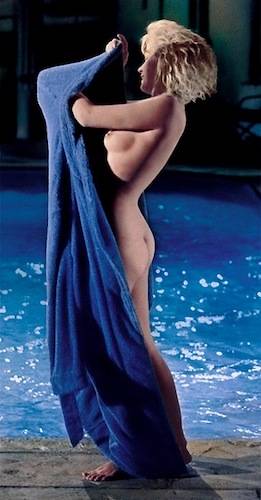 Status of the imaginary in the blank factors
Status of the imaginary in the blank factors
Beginning from the Mirror Stage, and its deployments in desire, aggressiveness, rivalry, envy, satisfaction or even dissatisfaction, one is, from the start of the life, accustomed to considering principally the image from the view of the production of the double, the similar, the mask even; which gives us the imaginary elements for the establishment of one’s identity. This first has an important function in the construction of the corporeal schema, in which the image with imaginary value brings the sense of a beautiful shape, Gestalt necessary for the sense of life. This image is effectively a sort of mask of the orifices of the body (Lacan, 1968-1969, session of 8 January 1969). However, even if the body has orifices, the image of the body is normally not pierced, altered, or it should not be.
In itself, the imaginary is the domain where images, notably those speculative, of the other and of the self, are tasked with initializing and maintaining sense (Lacan, RSI Seminary). The imaginary domain integrates images in a coherent manner and allows a necessary consistency so that, for example, the body image can hold together with the real body. We place here also all of the sensible phenomena and the intimate impressions of relationships in life, whether in normality or in pathology.
In psychosis, we habitually observe that the imaginary system is hypertrophied by the fact that, selectively, some images, through which the problematic of triggering occurs, are or have been pierced. Thus, for example, in the serious eating disorders particular of manic-depressive psychosis, the actual body is not perceived in its specular reality, but advisedly deformed. Here in the holes of the deformed specular image live the oldest blank factors.
But not all images are situated in the realm of the imaginary. There are certain images which detach themselves from all the others and which possess a clear symbolic function. The symbolic function concerns the image in its relation to the signifier, as in gestures and tics, for example, but also in images outside the body but that associate with it, modifying it substantially. This is the case with the phallus which has an imaginary value and the Phallus which has a symbolic value. Is it also, for example, the image of the rat in the narration of the anal torture which both abhors and fascinates The Rat Man?
Outside of psychopathology, the significant function of the image is also to repair in the iconology of Erwin Panofsky when it takes the perspective of a symbolic form. This also serves to situate ourselves and to repair ourselves in the geometric universe in our own time. The color red, for example, is a visual image, but it takes on a symbolic value in the rules of the road, which uses the reality of red stoplights to indicate the momentary prohibition to move forward. But the image of symbolic value shapes our conception of space not just in the opening and framing of liberty or of adventure, but also for example in agoraphobic confinement or in the loss of spatial references by mental dissociation in the confusional syndrome.
More particularly, in manic-depressive psychosis, the symbolic image will constantly rearrange the temporal and spatial image according to the coordinates of the subject’s history. We have there images of death, frightful swarming insects along with very distressing dreams of anguish, nightmares that are not really dreamed but actually experienced and which are often accompanied by anguish-inducing hallucinations… In these cases, readily present behind the symbolic images, the blank factors can be at the service of the construction of necessary suppletions to counter their manic force. It is there, then, where we must seek the material necessary for an effective psychotherapeutic treatment of the manic-depressive.
Mortal aspect of the image and the pathological suppletions
Aside from the imaginary images and the symbolic images, we have in clinical studies other types of images which are lifeless, frozen, inanimate, without movement, as if they were simply the surface of a projection, indelible images, still images or screen images.
These images do not all present themselves in psychosis. First, we have those which concern a sort of rigidity or a fixed image, as if the spectacle of the world were unfortunately stopped at one single, or a small number of images. This can be seen in the phenomenon of fixed images in certain perversions, but also in some compulsive collections, exaggerated series, fetishized experiences; or, contrarily, in experiences that are deeply phobic.
Images directly linked with rejected reality but which recur often are more frequently found at the conjunction of perversion, phobia, and psychotic moments, themselves phenomena which we call trans-boundary events (Arce Ross, 2013), as in strictly psychotic experiences.
The images which present themselves directly in the reality of forclusion, passing neither by the imaginary of the relation nor by the alienation of the symbolic Other, therefore must go by the mortal aspect of the image. They become, for better or worse, an aid for the subject to compartmentalize a minima the fact that there is no image to mediate, either with the core of the forclusion or the return of the forclosure.
Screen images will also be the first spontaneous material that the subject searches in order to create a suppletion. Most of the time it will be found even though it has been created not of real, stable suppletions, but of failed suppletions, of pathological suppletions. These images in reality, in principally screen images, have the functionality to tackle, and paradoxically to show, or to indicate, simultaneously the emptiness and the radical fracture or non-functional hole.
We are then in agreement with the idea of Lacan when he says «images that have never been integrated create holes, fracture points; and it is from these holes that the subject can find himself within different symbolic determinants which then make him into a subject with a history» (Lacan, Sém. I, p. 307). Very well. Let us note here anyway that this reference from Lacan seems to state, by his estimation, that which I have isolated in terms of blank factors during several years of research on the MDP (Arce Ross, 1999). However, the problem is that the manic-depressive subject cannot relate, nor encrypt, nor even decipher, these different holes to find himself in his story. He just remains fixed on a certain number of holes, conveying non-integrated, frozen images and unused spaces, which are incessantly repeated in the rupture zones of the signifying chain.
In effect, screen images are frozen images but which have an enormous capacity for repetition, or even an intrusion. They reappear abruptly in ideas, in actions, in events, and so displace the subject’s life and its pulsating dimension. So, the frozen image itself does not pulsate, but manages to restrict the pulsation to remain locked up, paralyzed, giving the subject the impression of an animated reality and of liberation, whereas in reality it is only a personal tyranny, a fanatic religion to oneself, an individual totalitarianism. This is found well at work in serious sexual perversions, insofar as these can be possible fates of certain psychoses that have missed their suppletional production.
More precisely in the MDP, screen images are produced accompanied by the creation of a veritable fictional character, which surreptitiously replace itself for the personality, and has an important rapport with the pathological suppletion. We have plenty of examples of these mortal characters, involuntarily or unconsciously suicidal, in the life of renowned artists, as in the case of the character Marilyn Monroe for Norma Jean Mortenson, Gainsbarre for Gainsbourg, the pseudonyms of Romain Gary, etc. It is the decline of the subject behind the image which conveys a desire of death and the death of desire. It takes so much to identify oneself with this screen image of desire – and especially with the blank factors – that the subject can more easily slide towards the fateful fulfillment of the desire to die.
In this regard, Tara Hanks argues that «one of Greenson’s last essays, “The Screen of Transference: Roles and True Identity” (1976), featured a thinly-veiled portrait of Monroe, whom he described as an archetypal “screen character patient”» (Hanks, 2015). But in fact, we are not certain that this article by Ralph Greenson even exists! Perhaps it does not exist because this commentator applies mainly the book of Michel Schneider, which is not only a fictional work on the life of Marilyn Monroe, but also on the attitude and theories of Ralph Greenson. If it does exist, it could be that this text is one of those that was forbidden to be published until 2039…
Although I could not find the text from 1976, there is another, from 1958 (four years before the death of Marilyn Monroe), which is in fact real, and in which Greenson discusses the screen defenses or the screen identities that make up serious identity troubles. Whose the screen defenses and screen identities would most likely appear during the end of the two world wars and would become a pure psychological product of American Culture (Cagle, 2005).
Effectively, according to Robert Cagle, «in a 1958 article entitled “On Screen Defenses, Screen Hunger, and Screen Identity” psychoanalyst Ralph Greenson […] details the development of psychoanalysis, from its early focus on symptom neuroses, through the character disorder-phase of the post-World War I era, and finally ending up with what he terms the identity disorder of the post-World War II period. These identity disorders, according to Greenson, were “a product of American culture””. Greenson says, notably, the following: “in an uncertain world one searches for salvation in a variety of ways. Among them, in a country like America where we have so many choices and so many pressures, we search often for a new identity instead of a fuller and richer identity» (Greenson, 1958, p. 261).
Screen Images and Therapeutic Alliance
As we have said, we must wait until January 2039 to have access to all the writings of Ralph Greenson on Marilyn Monroe, or of her herself (manuscripts and audio recordings stored at UCLA, Margolis, 2011). Despite this, there is in circulation a text that he devoted to the actress: “Special Problems in Psychotherapy with the Rich and Famous” (1978).
In this text, he says above all this: “rich and famous people believe that prolonged psychotherapy is a rip-off. They want their therapist as a close friend, they even want his wife and his children to become part of the therapist’s family[…] These patients are seductive[…] Rich and famous people need the therapist twenty-four hours a day and they are insatiable. They are also able to give you up completely in the sense they are doing to you what was done to them by their parents or their servants. You are their servant and can be dismissed without notice”. It is from these findings that comes, among other things, the ever important notion of the therapeutic alliance, written of by Ralph Greenson, a notion permitted by the psychoanalysis of rich and famous people…and by the psychopathology of Marilyn Monroe.
Being used to receiving, and from time to times but for several years, some patients of the rich and famous, notably in the domain of cinema and of showbiz, I can actually recognize — in clinical elements and with this type of patient, particularly in the special regime of a transference taking place “naturally” on both sides — what Greenson is saying. In fact, the so-called rich and famous are therefore easily free from the boundaries and social constraints of the rest of the population, and especially those who have had serious breaks in their family history and in several generations; that is, namely those who can bring out a particular transference in the analyst, who are then undoubtedly a separate clinical category.
We know that «in the 1950s and 1960s, all kinds of pioneering treatments for mental illness were tested» (Taborrelli, 2009). It is in this movement of therapeutic renewal that the work of Ralph Greenson on The Working Alliance and the Transference of Neurosis (1965) is borne. In his book on The Technique and Practice of Psychoanalysis (1967), Greenson describes the therapeutic alliance as «that reasonable and reflective part of the patient’s feelings towards the analyst».
In the therapeutic alliance, the psychoanalyst will seek in the patient an active cooperation to involve him more in the psychoanalytic work, so that the analysand becomes a kind of co-psychotherapist of his own problem. There are thus flash moments in which the analytic discourse is reversed in the master’s discourse, with all the virtues’ and difficulties associated with these reversals. The negative and harmful version of these reversals is what allowed some American psychoanalysts, especially formerly Anna-Freudians, to design techniques as primary, erroneous and, in the end, as dangerous as the CBT.
But, while being a monstrous extreme whose risk is always possible in psychoanalysis, these primary techniques are fortunately not, far from it, the essential of the therapeutic alliance of Ralph Greenson. The latter, stripped of the formers, could on the contrary render real benefits by giving access to the subject, not only to the discourse of the master when it was necessary, but also to the analyst’s place in the discourse of the analyst. The whole problem is to know, to measure in fact, under what conditions, when, how and with whom we can build such a mutual collaboration. Whether we like it or not, in the successful analyzes, there is the progressive, involuntary, uncontrolled, uncalculated construction of this analytic partnership which we can well situate as, in Lacanian terms, a real and clinical pass (Arce Ross, 1997).
However, especially regarding the case of Marilyn Monroe, we have to deal with the excesses and difficulties of the therapeutic alliance with patients suffering from serious personality disorders known as screen identity.
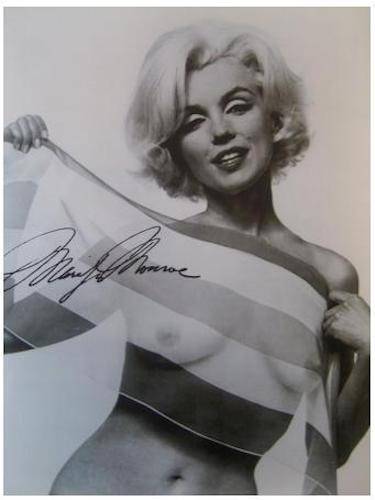 Negative therapeutic love
Negative therapeutic love
Like the negative therapeutic reaction, we can speak after Ralph Greenson’s work — and these are our terms — of a sort of negative therapeutic alliance. That is to say that it is overflow and difficulties of the therapeutic alliance with patients suffering from serious personality disorders called screen identity.
In the phenomenon called negative therapeutic reaction, the subject reacts strongly and negatively both in his life and in the setting itself by acting-out such as failures, delays, unpaid debts, provocations, contradictory acts, cynical and ambivalent, caprices, leaks, tyrannical demands… And, in the treatment, he reacts above all to the interpretation of the analyst who, although in the case where it can be received as brutal, yet touches the foundations of the truth of the subject.
On the other hand, in what we call negative therapeutic alliance, the subject reacts, not really by a negative transference, but rather by an excessive positive transference. Or even by a kind of wild relationship, in addition to the desire of the analyst, that is in addition to the excessive transference of the analyst. In the negative therapeutic alliance, it is not so much about the analyst’s involvement in the therapeutic effort. It is rather when the analyst comes to collaborate, unconsciously and involuntarily, with the pathological effort of the subject. In this field, things are reversed: the analysis becomes slyly, and uncontrollably, the new pathological means. That is to say, the transferential relation and the analytic space become the domain in which a new psychopathology, involuntarily created by an analytic relation thus conceived or lived, is expressed and perpetuated.
Note, however, that, vis-à-vis the previous situation, that pre-analytic, there is clearly progress. Because, at least at the beginning, symptoms are framed, limited and controlled by the psychoanalytic psychotherapy. Except that at the stage of negative therapeutic alliance, the risk is great that the analysis itself is contaminated by the pathological. Because the greater the therapeutic effort and the greater the analyst’s involvement in this effort (with the voluntary or voluntarist participation of the patient, of course), the more risks there are for the analyst couldn’t support neither his role nor his place.
In these cases, the analysis becomes the inter-subjective laboratory where blank factors — these fragments of an unfathomable emptiness of manic-depressive being — find a privileged expression which turns now in a short-circuit. And so, in the same way as in the analyst’s possible attitude towards negative therapeutic reaction, the negative therapeutic alliance can easily become a true pathological alliance. Since reactions towards therapeutic alliance can eventually become a transference love often negative, producing havoc and ending most of the time by a mutual suicide of love, even if, by definition, this love was or remains therapeutic.
It should be noted, however, that these risks only exist with a few very specific types of pathological personalities. This is the case of very atypical subjects, like can be rich and famous people who, like Marilyn Monroe, are moreover, and above all, subjected to a host of screen images which are, by this means, imported brutally into the transferential relationship.
If we extrapolate these questions to the amorous experience outside the analytic transference and obviously outside the psychopathology of melancholy, we can observe that therapeutic loves, so common in today’s eroticism, put in place the same coordinates as negative therapeutic alliance. Meaning that in these very intense emotional relations, though indefinable and transient, love is hyper-idealized, built on the unstable ground of a more pathological than therapeutic alliance, or often so unilaterally, and ends most of the time, by a suicide of the love.
That is to say, like the manic-depressive subject, who does not commit suicide for love but “suicide” in him the possibility of living the love, the therapeutic lover of our times also ends up killing the possible part of the love in him.
German ARCE ROSS. Paris, September 9, 2018
Bibliography
ARCE ROSS, German, « La Scansion logique de la passe », L’Inconscient ignore-t-il le temps ?, PUR, Rennes, 1997, pp. 51-57
ARCE ROSS, German, «White factors and delirium activation in manic-depressive psychosis», L’Évolution psychiatrique, Volume 66, Issue 3, July–September 2001, pp. 474-487
ARCE ROSS, German, « Cotard’s Syndrom and the Flight of Ideas », L’Évolution psychiatrique, Volume 70, issue 1, January-March 2005, pp. 161-176
ARCE ROSS, German, Manie, mélancolie & facteurs blancs, Préface du Professeur Georges Lantéri-Laura. Beauchesne, Paris, 2009
ARCE ROSS, German, La Fuite des événements. Les Angoisses altruistes dans les suicides maniaco-dépressifs, Huit Intérieur Publications, Paris, 2016.
CAGLE, Robert, « You watch too much TV, kid: casualties of cultural colonialism», in : CineAction, n° 65, Questia.com, 2005
GREENSON, Ralph, «On Screen Defenses, Screen Hunger, and Screen Identity», in : Journal of the American Psychoanalytic Association, n° 6, 1958, pp. 242-262
GREENSON, Ralph, sur «The Working Alliance and the Transference Neurosis», Psychoanalytic Quarterly, Vol. 34, 1965, pp. 155-181
GREENSON, Ralph, The Technique and Practice of Psychoanalysis, International Universities Press, New York, 1967
GREENSON, Ralph, «Special Problems in Psychotherapy with the Rich and Famous», UCLA Collection, August 18, 1978
GUISALBERTI, Giosué, The Psychoanalysis of Marilyn Monroe, Université de Guelph-Humber
HANKS, Tara, The Mmm Girl, CreateSpace Independent Publishing Platform, London, 2015
LACAN, Jacques, Le Séminaire, Livre I : Les Écrits techniques de Freud (1953-1954). Texte établi par Jacques-Alain Miller, Seuil, Paris, 1975, p. 307
LACAN, Jacques, Le Séminaire, Livre XVI : D’un Autre à l’autre (1968-1969). Texte établi par Jacques-Alain Miller, Seuil, Paris, 2006, pp. 91-104, leçon du 08/01/69
LACAN, Jacques, Le Séminaire, Livre XXII : RSI
MARGOLIS, Jay, Marilyn Monroe, A Case for Murder, iUniverse, 2011
SCHNEIDER, Michel, Marilyn, dernières séances, Gallimard, Paris, 2006, p. 132
TARABORRELLI, J. Randy, The Secret Life of Marilyn Monroe, Grand Central Publishing, 2009
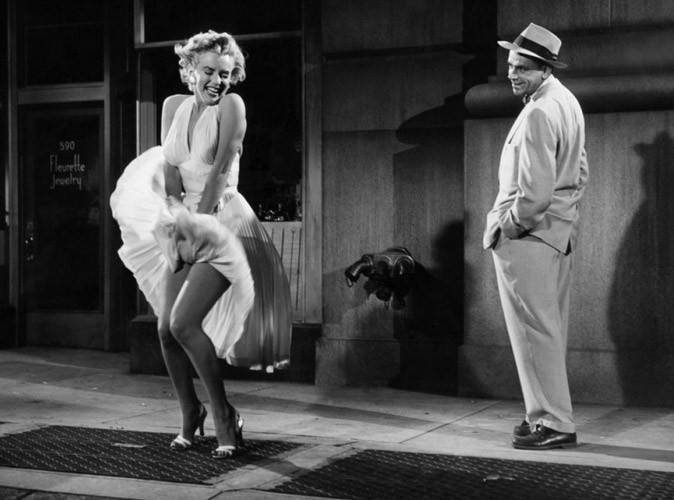
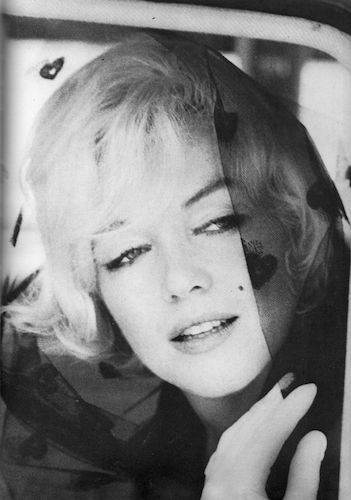

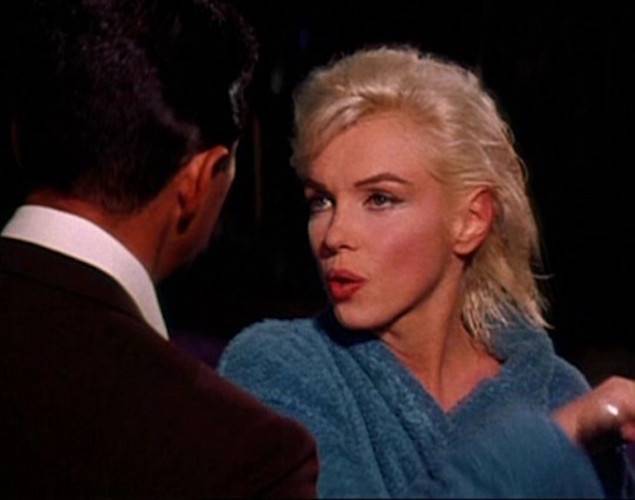

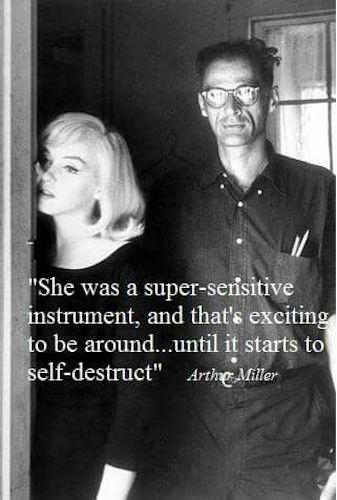



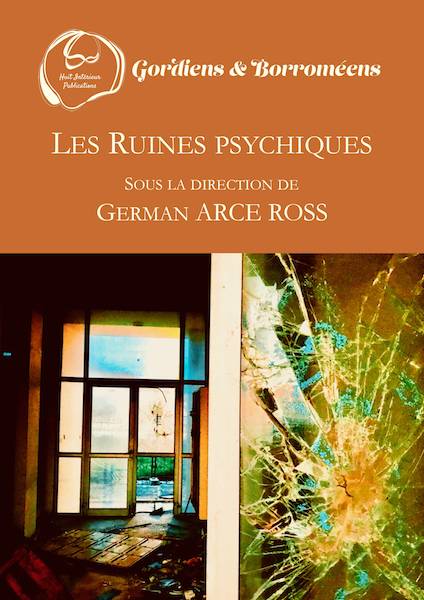

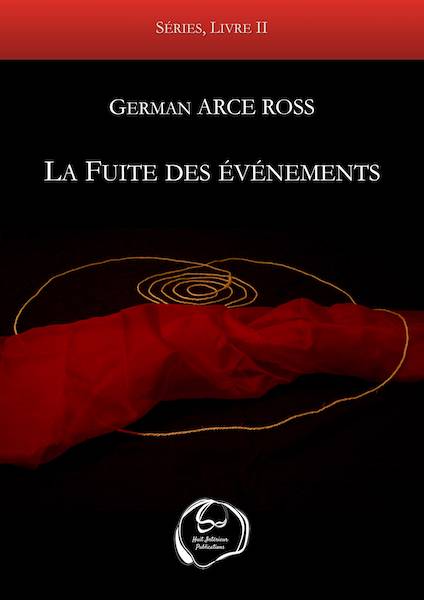

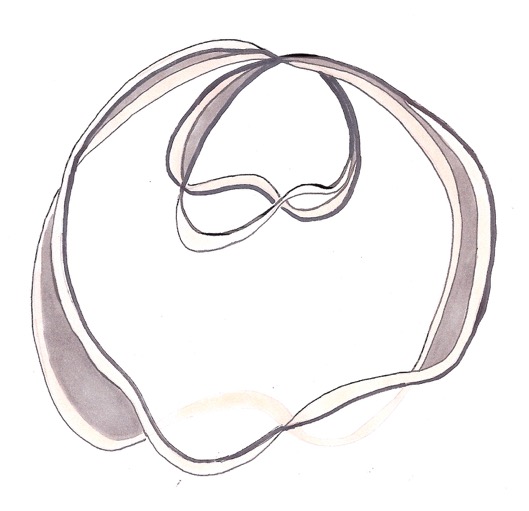

3 Pingbacks